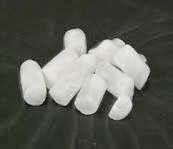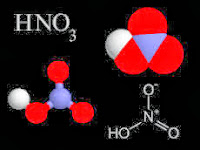Local precipitation of water vapor in the air to produce rain (when needed and in necessary amounts) would be a god-send to humanity. Most common approaches so far have been ways to "seed" condensation of the water vapor in the air. Recent research has, however, surfaced the possibility of using lasers to promote condensation.
Traditional "Seeds" of Condensation
Dispersing tiny particles of dry ice, silver iodide and other salts is the traditional approach to seeding clouds to encourage precipitation in the form of rain.
The efficiency of this approach is, however, a bone of serious contention because the success of this approach is never predictable to any level of acceptable confidence.
Laser Filaments
A narrow column of plasma is known as a laser filament.
A column of plasma forms when a laser pulse self-focuses and when its self-focused intensity is high enough to ionize the medium the pulse is traversing through. At this point in time and location, the column of medium is actually a column of plasma aka a laser filament.
As the energy required for continued ionization detracts from the pulse energy, the filament steadily dissipates over time.
Air is as medium for laser beam propagation and, thus, for the formation of filaments.
Typical filaments are a few meters long but filaments with lengths in the hundreds of meters are not uncommon.
Inside a Laser Filament
The local chemical composition of the atmosphere appears to be altered by the existence of a laser filament.
In particular, at relative humidity levels higher than 70%, the HNO3 amounts inside a laser filament are found to be over 1,000 times the levels at which HNO3 is known to stabilize water droplets, increase their growth and increase their rate of growth.
The most interesting finding from experiments is that this higher concentration outlives the laser filament by orders of magnitude i.e. the water-producing effects of increased concentration can continue to make water droplets larger for as long as 15-20 minutes.
The eventual result: rain!
Traditional "Seeds" of Condensation
 |
| Dry Ice Source - en.wikipedia.org |
 |
| Silver Iodide crystal Source - en.wikipedia.org |
The efficiency of this approach is, however, a bone of serious contention because the success of this approach is never predictable to any level of acceptable confidence.
Laser Filaments
 |
| A Laser Filament Source - large.stanford.edu |
| A Laser Filament Source - large.stanford.edu |
As the energy required for continued ionization detracts from the pulse energy, the filament steadily dissipates over time.
Air is as medium for laser beam propagation and, thus, for the formation of filaments.
Typical filaments are a few meters long but filaments with lengths in the hundreds of meters are not uncommon.
Inside a Laser Filament
 |
| HNO3 Source - ffden-2.phys.uaf.edu |
In particular, at relative humidity levels higher than 70%, the HNO3 amounts inside a laser filament are found to be over 1,000 times the levels at which HNO3 is known to stabilize water droplets, increase their growth and increase their rate of growth.
The most interesting finding from experiments is that this higher concentration outlives the laser filament by orders of magnitude i.e. the water-producing effects of increased concentration can continue to make water droplets larger for as long as 15-20 minutes.
The eventual result: rain!
No comments:
Post a Comment